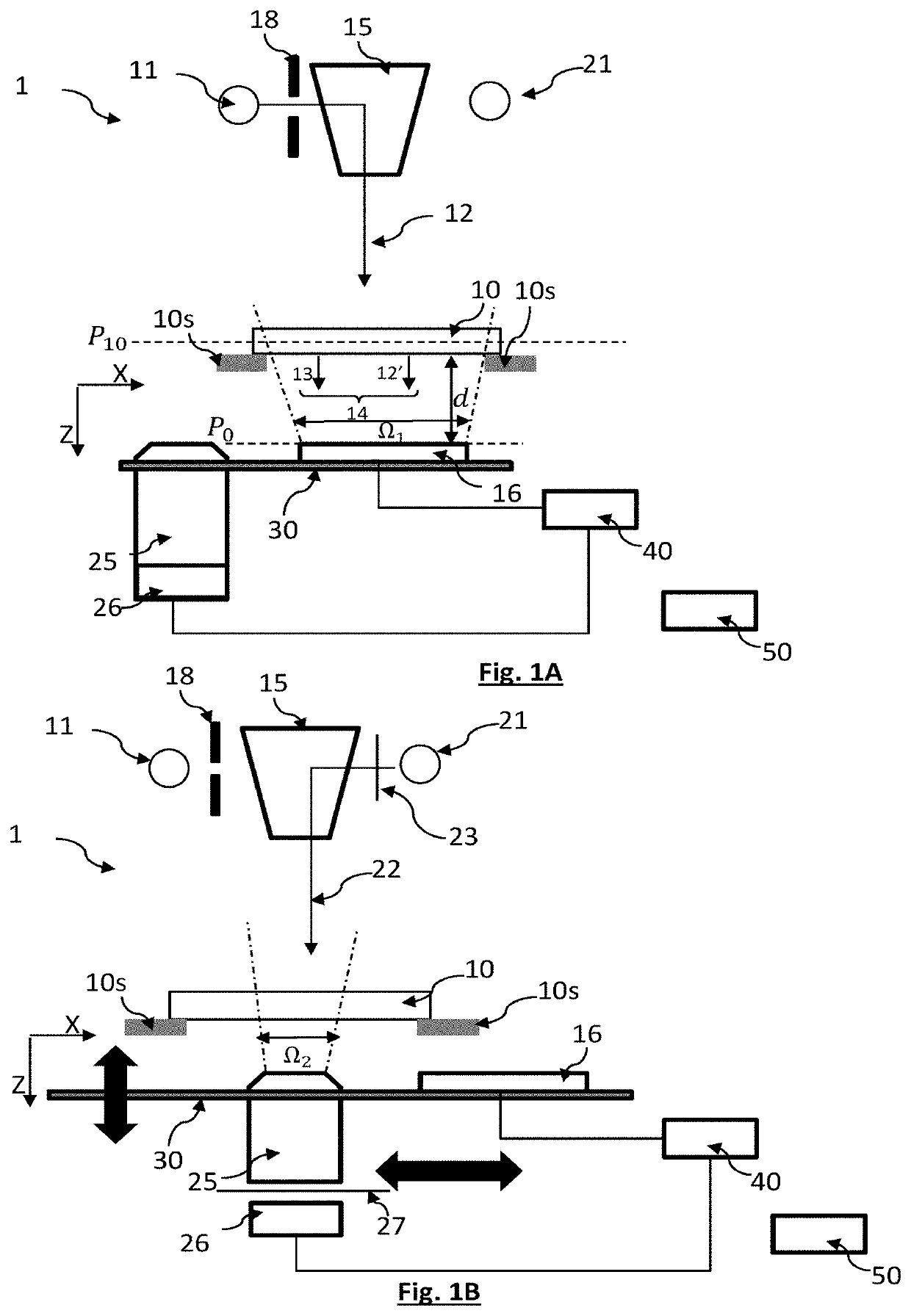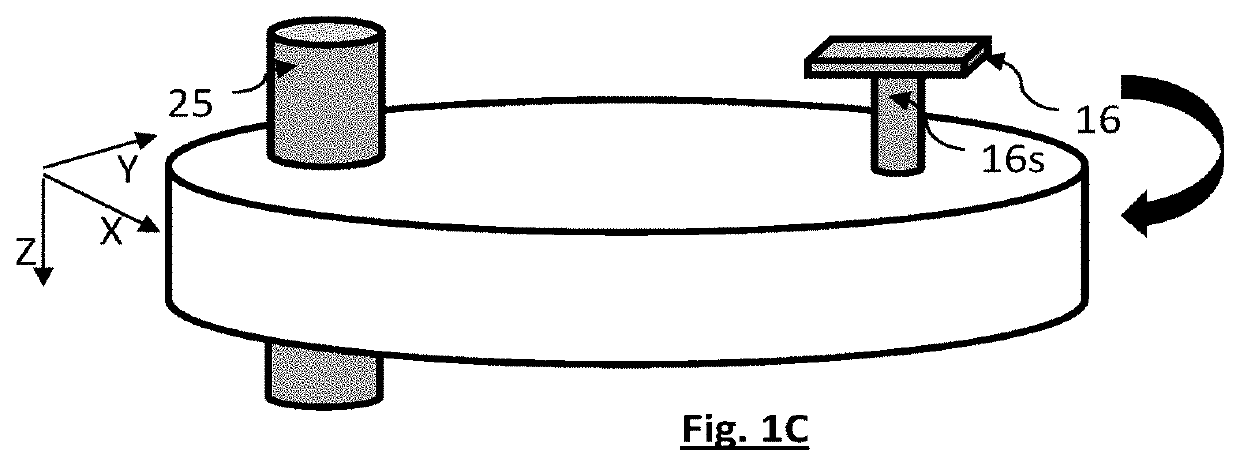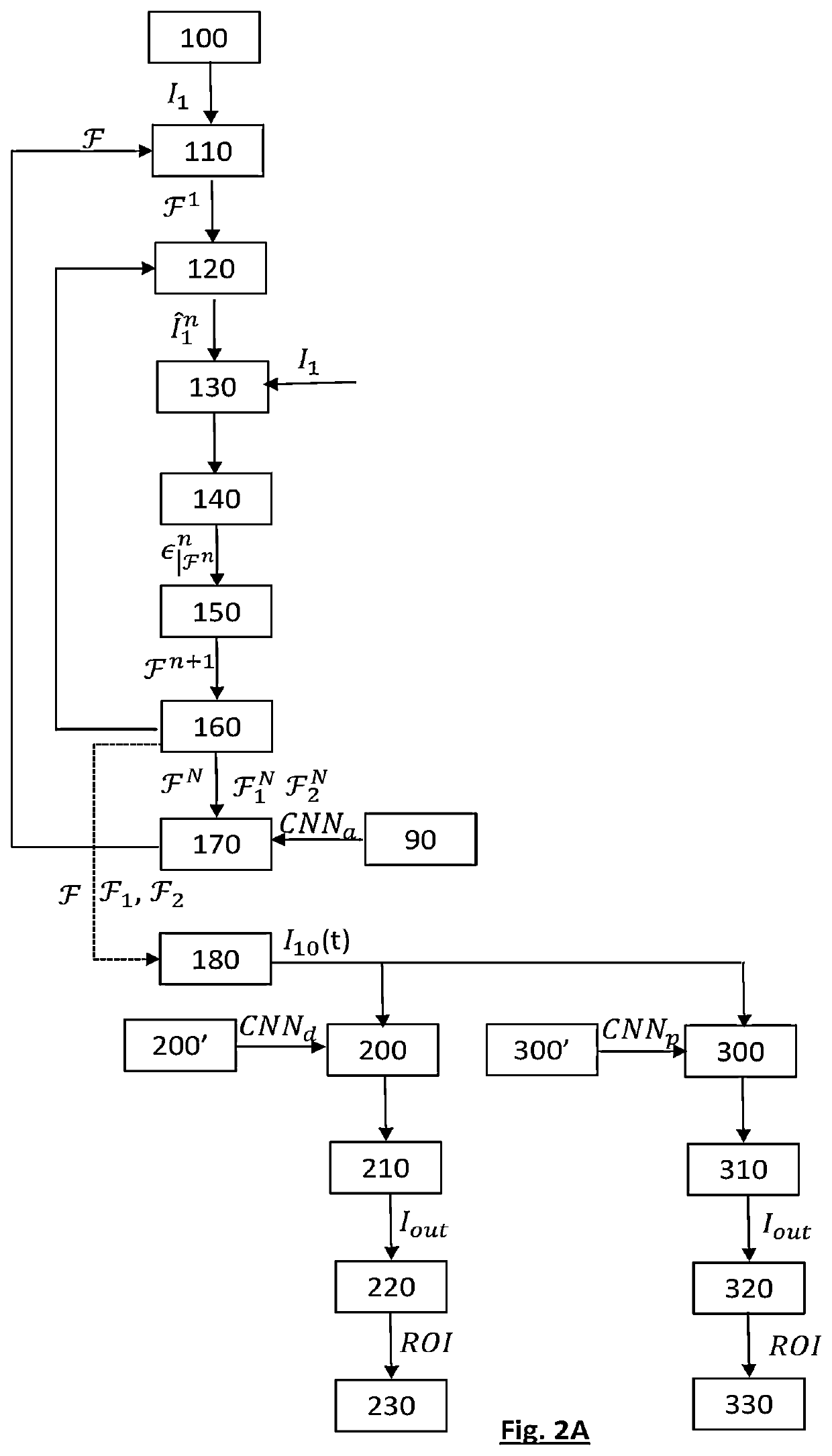Method for detecting a cell event
- Summary
- Abstract
- Description
- Claims
- Application Information
AI Technical Summary
Benefits of technology
Problems solved by technology
Method used
Image
Examples
Embodiment Construction
[0068]FIGS. 1A, 1B and 1C represent an example of a device 1 for observing a sample, making it possible to carry out the invention. It is a device making it possible to observe a sample according to a lensless first imaging mode and a second mode of conventional imaging, with focused imaging, by using an objective making it possible to obtain a magnification of the image. The observation device is based on the dual-mode device described in EP3519899A1 (U.S. Ser. No. 10 / 754,141), which was cited in the prior art. FIG. 1A represents the device configured according to the lensless imaging mode, whereas FIG. 1B shows the device configured according to a focused microscopy mode, for example with fluorescence imaging.
[0069]The device comprises a first light source 11 capable of emitting a first light wave 12, referred to as the incident light wave, which propagates towards a sample 10 along a propagation axis Z, in a first spectral band Δλ.
[0070]The sample 10 is arranged on a sample suppo...
PUM
 Login to View More
Login to View More Abstract
Description
Claims
Application Information
 Login to View More
Login to View More - R&D
- Intellectual Property
- Life Sciences
- Materials
- Tech Scout
- Unparalleled Data Quality
- Higher Quality Content
- 60% Fewer Hallucinations
Browse by: Latest US Patents, China's latest patents, Technical Efficacy Thesaurus, Application Domain, Technology Topic, Popular Technical Reports.
© 2025 PatSnap. All rights reserved.Legal|Privacy policy|Modern Slavery Act Transparency Statement|Sitemap|About US| Contact US: help@patsnap.com



